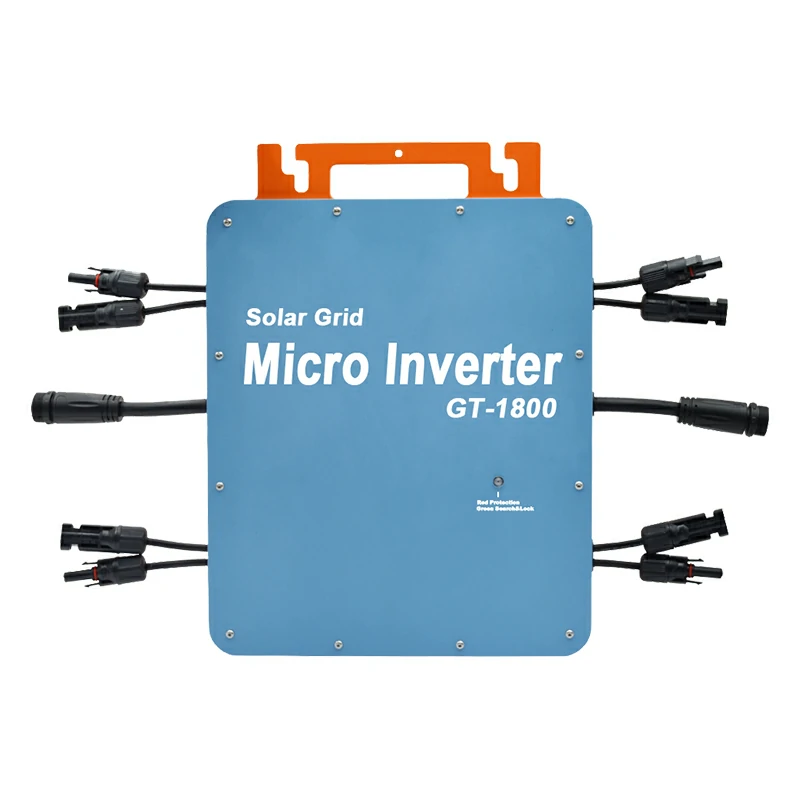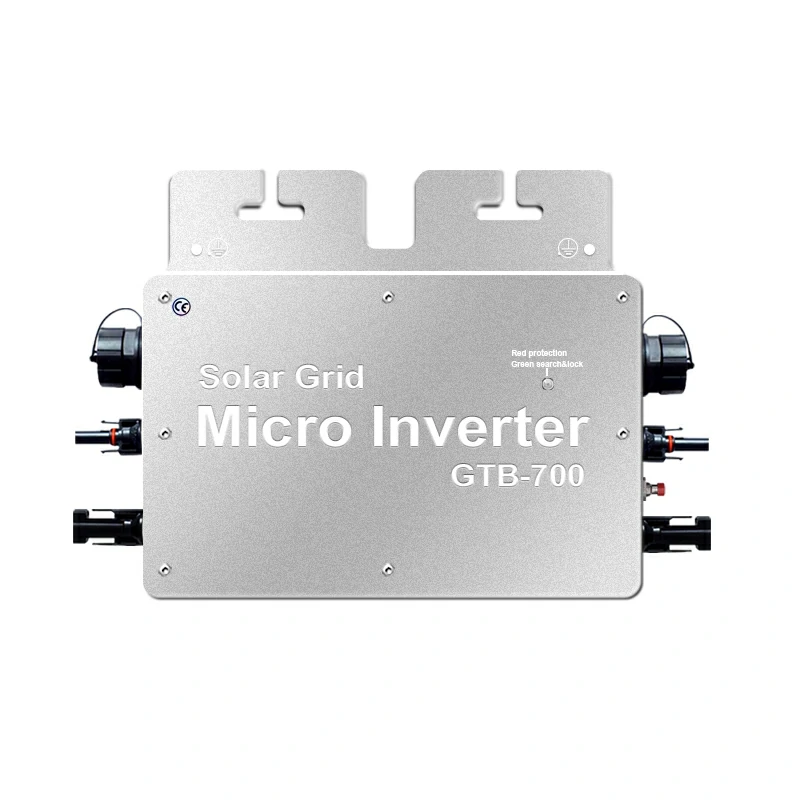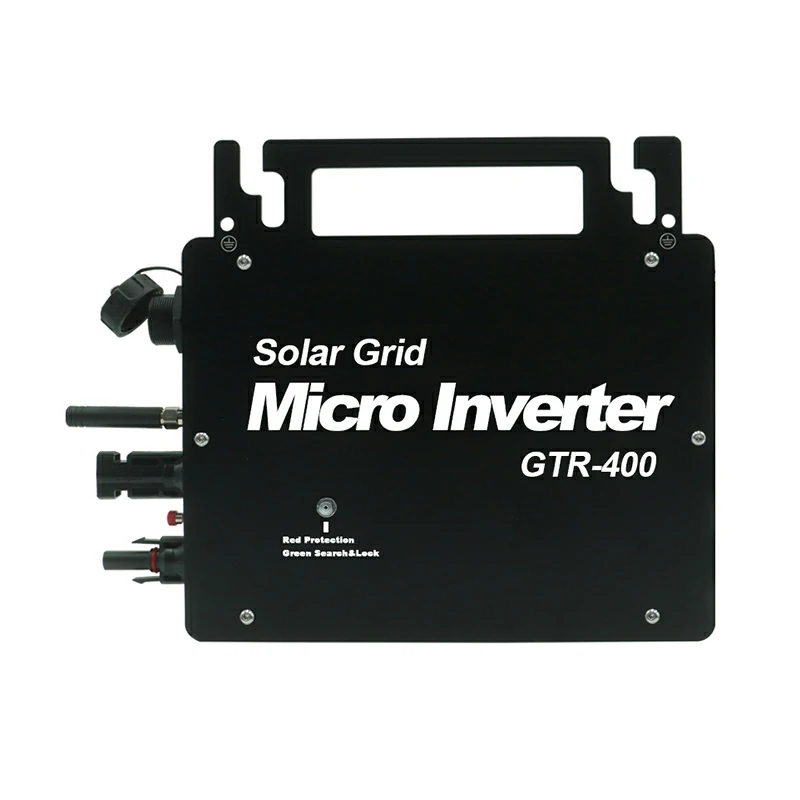Introduction
Overview of PV Installations
Solar photovoltaic (PV) systems are an increasingly popular choice for generating renewable energy. These systems convert sunlight directly into electricity, providing a clean and sustainable energy source. A crucial component of any PV system is the inverter, which converts the direct current (DC) produced by solar panels into alternating current (AC) that can be used by home appliances and fed into the electrical grid.
Purpose of the Article
This article aims to assist potential buyers in understanding the differences between grid-connected micro-inverters and central inverters. By comparing their functionalities, advantages, and disadvantages, we hope to provide clear guidance on which type of inverter might be the best choice for your specific needs.

Understanding Inverters in PV Systems
Role of Inverters
Inverters are essential in PV systems because they enable the use of solar-generated electricity in homes and businesses by converting DC to AC power. Moreover, in grid-connected systems, inverters ensure that the electricity produced is compatible with the grid’s requirements.
Types of Inverters
Micro-Inverters
Micro-inverters are small, compact devices installed on each solar panel in a PV system. They perform DC to AC conversion at the panel level, allowing for independent optimization of each module.
Central Inverters
Central inverters, on the other hand, are larger units that serve multiple solar panels grouped together in series. They aggregate the DC power from these panels and convert it into AC power at a single point.
Grid-Connected Micro-Inverters
Technical Overview
Grid-connected micro-inverters work by attaching a small inverter to each solar panel. This setup allows for module-level power conversion, which can significantly enhance the performance and monitoring capabilities of the system.
Advantages
- Module-Level MPPT: Micro-inverters provide Maximum Power Point Tracking (MPPT) at the individual panel level, ensuring that each panel operates at its optimal efficiency regardless of shading or orientation differences.
- Improved System Efficiency: By optimizing each panel independently, micro-inverters can increase the overall energy harvest from a PV system.
- Enhanced System Reliability: The decentralized nature of micro-inverters means that the failure of one unit does not significantly impact the overall system performance.
- Simplified System Design and Installation: Micro-inverters can simplify system design and installation, as there is no need for complex string sizing and voltage matching.
Disadvantages
- Higher Initial Cost: Micro-inverters generally have a higher initial cost per watt compared to central inverters.
- Potential for Increased Maintenance Complexity: With more units in the system, there is a greater potential for maintenance complexity, although each unit’s failure has a limited impact.
Central Inverters
Technical Overview
Central inverters are installed at a single location, converting the aggregated DC power from multiple solar panels into AC power. They are commonly used in larger PV installations due to their cost-effectiveness and simplicity.
Advantages
- Lower Initial Cost: Central inverters typically have a lower initial cost per watt, making them an attractive option for larger installations.
- Proven Technology: Central inverters have been widely used and tested, providing a reliable solution for many PV systems.
- Easier Maintenance: With fewer components to manage, central inverters often require less maintenance compared to systems with multiple micro-inverters.
Disadvantages
- Single Point of Failure: If the central inverter fails, the entire PV system can be affected.
- Reduced System Efficiency: Central inverters can suffer from string losses, reducing overall system efficiency.
- Limited Flexibility for System Expansion: Adding more panels to a system with a central inverter can be more challenging and less flexible than with micro-inverters.
Comparative Analysis
Performance and Efficiency
Energy Yield Differences: Grid-connected micro-inverters typically outperform central inverters in terms of energy yield. This is primarily due to their ability to maximize the output of each individual solar panel through module-level MPPT. Even if one panel is shaded or partially obstructed, the others continue to operate at their peak efficiency, whereas a central inverter system might see a significant drop in performance due to the weakest link effect.
Impact on Overall System Performance: Micro-inverters’ ability to handle partial shading and orientation differences more effectively translates to higher overall system performance. Central inverters, however, can be more efficient in uniformly sunny and unobstructed environments where string losses are minimized.
Installation and Maintenance
Installation Complexity and Cost: Installing grid-connected micro-inverters can be more straightforward in terms of electrical design because they eliminate the need for complex string configurations. However, they require more physical labor, as each panel needs its own inverter. Central inverters are less labor-intensive to install but require careful planning to optimize string configurations and minimize voltage drops.
Maintenance Requirements and Costs: Maintenance can be more complex with micro-inverters due to the higher number of units. However, because each inverter operates independently, a failure in one unit has a minimal impact on the system’s overall performance. In contrast, central inverters are easier to monitor and maintain due to their centralized nature, but any failure affects the entire system.
Scalability and Flexibility
Adaptability to System Size and Future Expansion: Grid-connected micro-inverters offer superior scalability. Adding more panels is straightforward, as each new panel only needs its own micro-inverter without impacting the existing system. Central inverters are less flexible; expanding the system may require replacing the inverter with a larger unit or carefully managing additional strings.
Reliability and Longevity
Lifespan of Inverters and Warranty Considerations: Micro-inverters generally have a longer lifespan compared to central inverters and often come with longer warranties (typically 20-25 years versus 10-15 years for central inverters). This longevity can provide additional peace of mind and reduce long-term costs.
Cost Analysis
Initial Investment vs. Long-Term Savings: While micro-inverters have a higher initial cost per watt, their ability to optimize each panel and provide higher energy yields can lead to greater long-term savings. Central inverters, with their lower upfront cost, might be more attractive for large-scale installations with lower budgets, but the potential for lower efficiency and higher impact of failures should be considered.
Return on Investment (ROI) Comparison: The ROI for micro-inverters can be higher due to increased energy production and reduced losses from shading and orientation issues. Central inverters, while cheaper initially, may offer a lower ROI if the system is not in optimal conditions.
Use Case Scenarios
Residential PV Installations
Typical Requirements and Suitable Inverter Types: For residential installations, grid-connected micro-inverters are often more suitable due to their flexibility, ease of installation, and enhanced performance in varied conditions. They are particularly advantageous in situations where shading or roof orientation varies.
Commercial and Industrial PV Installations
Typical Requirements and Suitable Inverter Types: Central inverters are commonly used in large commercial and industrial installations where the economies of scale can reduce costs and where conditions are typically more uniform. However, micro-inverters are gaining popularity in these sectors due to their superior performance and scalability.
Specific Case Studies
Examples of Successful Micro-Inverter and Central Inverter Installations:
- Residential Case Study: A homeowner in a partially shaded area chose grid-connected micro-inverters, resulting in a 15% increase in energy yield compared to a neighbor with a central inverter system.
- Commercial Case Study: A large warehouse installation used central inverters for cost efficiency, with careful design to minimize shading and optimize panel orientation, achieving significant cost savings.
Making the Decision
Key Considerations for Buyers
Factors Influencing the Choice Between Micro-Inverters and Central Inverters: Potential buyers should consider factors such as initial cost, system size, shading, roof orientation, and long-term performance goals. It’s essential to evaluate both immediate budget constraints and long-term benefits.
Questions to Ask and Information to Gather: Before making a purchase, ask about the total cost of ownership, warranty terms, expected energy yield improvements, and maintenance requirements. Consulting with a professional installer or grid-connected inverter manufacturer can provide valuable insights.
Summary of Pros and Cons
Recap of the Main Points Discussed in the Article: Micro-inverters offer better performance in varied conditions and enhanced scalability but come with higher initial costs. Central inverters are more cost-effective for large, uniform installations but can suffer from efficiency losses and less flexibility.
Recommendations
General Advice for Potential Buyers: For residential and small commercial installations with shading or varied orientations, micro-inverters are generally the better choice. For larger, uniform installations with strict budget constraints, central inverters may be more appropriate.
Situations Where Micro-Inverters Are More Advantageous: Installations with partial shading, varied panel orientations, or future expansion plans.
Situations Where Central Inverters Might Be Preferable: Large-scale installations with consistent sunlight and fewer budget constraints for initial investment.
Conclusion
Choosing the right inverter for your PV system is crucial for maximizing performance and achieving long-term energy savings. Understanding the differences between grid-connected micro-inverters and central inverters helps in making an informed decision that aligns with your specific needs and circumstances.




